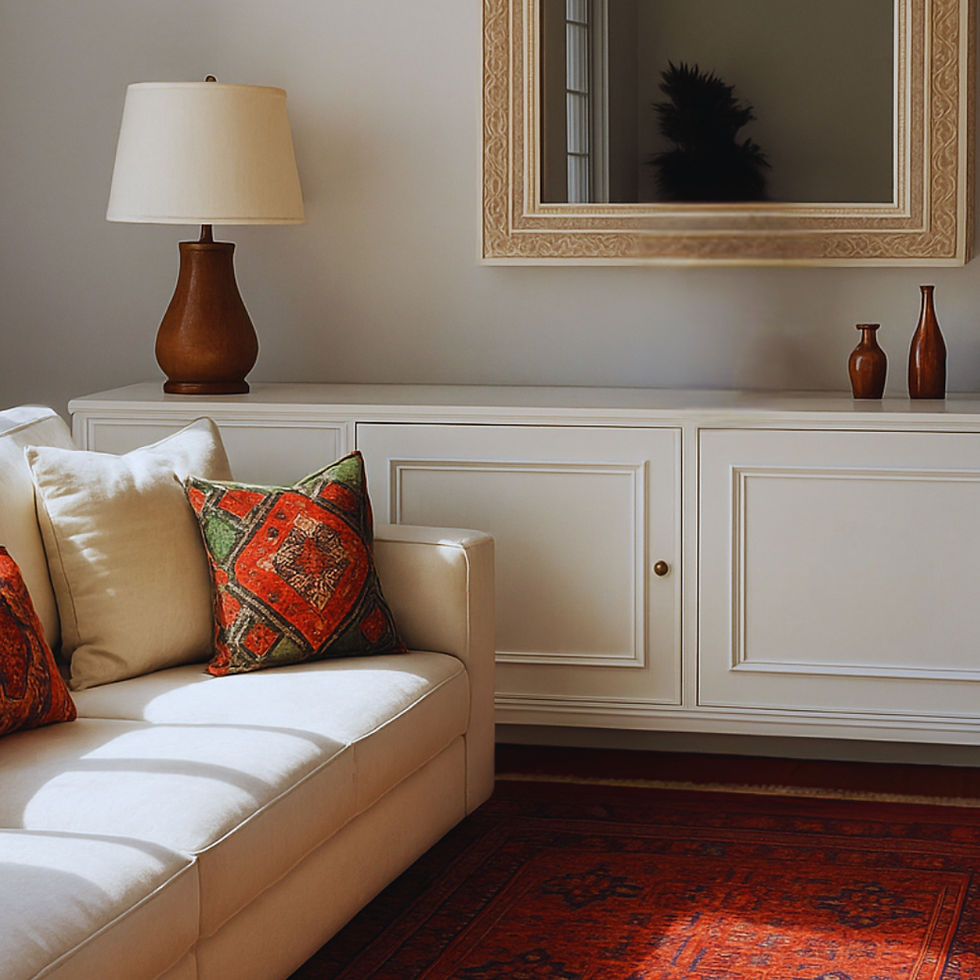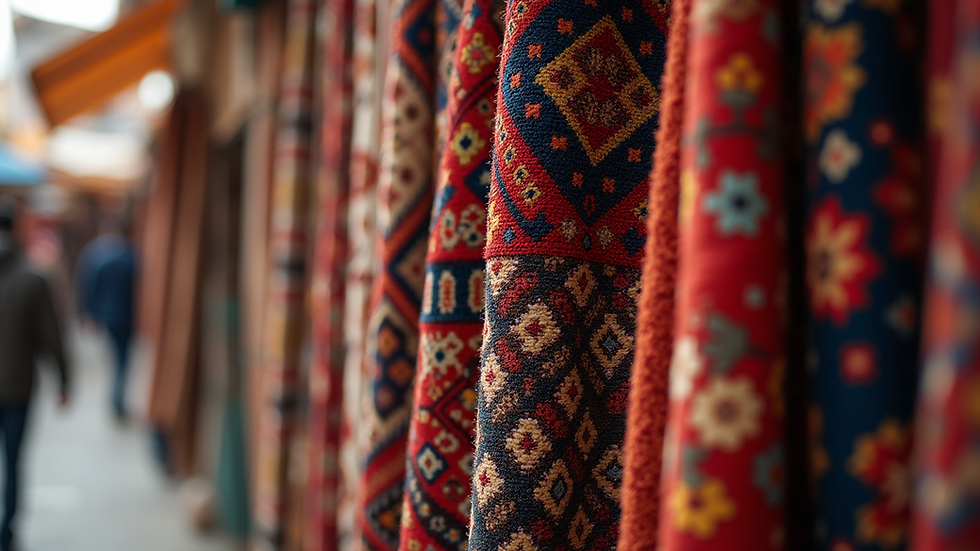Crafting Elegance: The Story of Handcrafted Afghan Designs
- Negin Javaheri

- Jul 16
- 4 min read
The art of carpet weaving in Afghanistan is not just a trade; it is a centuries-old tradition that symbolizes the nation's culture and identity. Afghan carpets are renowned for their intricate designs, vibrant colors, and the meticulous craftsmanship that goes into each rug. In this blog post, we will explore the enchanting world of handcrafted Afghan designs, delve into the history and significance of these carpets, and highlight what makes them some of the best in the world.
The Allure of Handcrafted Afghan Designs
Afghan carpets are celebrated for their unique designs, which often reflect the region's rich history and the various tribes that inhabit Afghanistan. Each carpet is a masterpiece, woven with an array of geometric patterns, floral motifs, and cultural symbols. The choice of colors is equally significant, with natural dyes pulled from local plants and minerals. This results in a stunning palette that ranges from deep reds and earthy browns to soft yellows and vibrant blues.

Handcrafting these rugs is a labor-intensive process, often taking months or even years to complete. Artisans spend countless hours weaving and perfecting each knot, ensuring that every carpet tells a story and embodies a piece of Afghan culture. This deep connection to tradition is what makes Afghan carpets so special—the dedication and passion of the artisans shine through in each intricately crafted design.
The Historical Roots of Afghan Carpeting
The tradition of carpet weaving in Afghanistan dates back over a thousand years, with roots that trace back to ancient civilizations. Historically, carpets were used not only for decorative purposes but also for practical needs, such as insulation and protection from the harsh Afghan climate.
In the great silk route of the past, Afghanistan served as a key stop for traders, introducing various influences from neighboring regions. These interactions resulted in a blending of styles—while maintaining authentic Afghan elements—which is evident in the carpets produced today. Over time, Afghan carpets have also become symbols of power and wealth, often gifted to dignitaries or used in significant ceremonies.

Today, many families have carried on this time-honored tradition, passing down techniques through generations. This ensures that the ancient art of carpet weaving remains alive, while simultaneously adapting to modern trends.
What is the Best Carpet in Afghanistan?
When discussing the best carpets in Afghanistan, it's important to mention the different types produced in various regions. Taimani, Bokhara, and Herati are some of the most recognized styles, each offering unique characteristics that cater to various tastes.
Taimani carpets, for instance, are known for their bold designs and vibrant colors, often adorned with floral patterns. Bokhara carpets, on the other hand, typically feature geometric designs with a more subdued color palette, making them suitable for various decor styles. Herati carpets frequently showcase beautiful fish patterns, which add elegance and sophistication.
Each of these styles incorporates various techniques and materials, but they all share a commitment to quality and artistry. The best carpet in Afghanistan often depends on personal preference but investing in any of these styles guarantees you a stunning piece of art for your home.

The Significance of Afghan Carpets Today
In today's global market, Afghan carpets are highly sought after for their beauty and craftsmanship. They are not just used as floor coverings; they are also treasured as decorative pieces, art, and even investments. The demand for authentic Afghan carpets has led to the establishment of fair trade practices, ensuring that artisans receive fair compensation for their work.
Buying an Afghan carpet supports local economies and empowers communities in Afghanistan. It helps preserve the weaving tradition, creating sustainable livelihoods for many families who rely on this craft.
The aesthetic appeal of these carpets is undeniable; they can beautifully complement various interior design styles, from modern minimalist to bohemian chic. Afghan carpets add warmth, texture, and character to any space, making them a timeless addition to home decor.
How to Care for Handcrafted Afghan Designs
To maintain the beauty and longevity of your Afghan carpet, proper care is essential. Here are some practical tips for keeping your carpet in excellent condition:
Regular Vacuuming: Use a vacuum cleaner without a beater bar to gently remove dirt and dust. Vacuuming once a week can help maintain its appearance.
Avoid Direct Sunlight: Sunlight can fade the colors of your carpet over time. Position your carpet away from direct sunlight or use curtains to block out UV rays.
Spot Cleaning: For spills, immediately blot the area with a clean, dry cloth to absorb the liquid. Avoid using harsh chemicals or scrubbing, as this can damage the fibers.
Rotate Your Carpet: To ensure even wear, rotate your carpet periodically. This helps prevent certain areas from becoming more worn than others.
Professional Cleaning: Consider getting your carpet professionally cleaned every few years to maintain its vibrancy and texture.
Following these simple care tips will ensure your handcrafted Afghan carpet remains a beautiful and cherished part of your home for many years to come.
The Legacy of Afghan Carpets
The story of Afghan carpets is one of resilience, artistry, and cultural pride. As we continue to appreciate and embrace these exquisite creations, it is essential to acknowledge the artisans whose skilled hands bring these pieces of art to life. Each carpet is a testament to their hard work and dedication, connecting us to a rich history that weaves through generations.
In a world that often favors mass production, owning an Afghan carpet means embracing craftsmanship and authenticity. These pieces serve not just as decorative items but as heirlooms that can be passed down, holding stories and memories that enrich our lives.
Investing in an afgan carpet is more than just a purchase; it is a commitment to preserving a historic craft and supporting the artisans who dedicate their lives to this ancient tradition. By choosing a piece of this artistry, you are also inviting a slice of Afghan culture into your home—filled with warmth, beauty, and elegance.




Comments